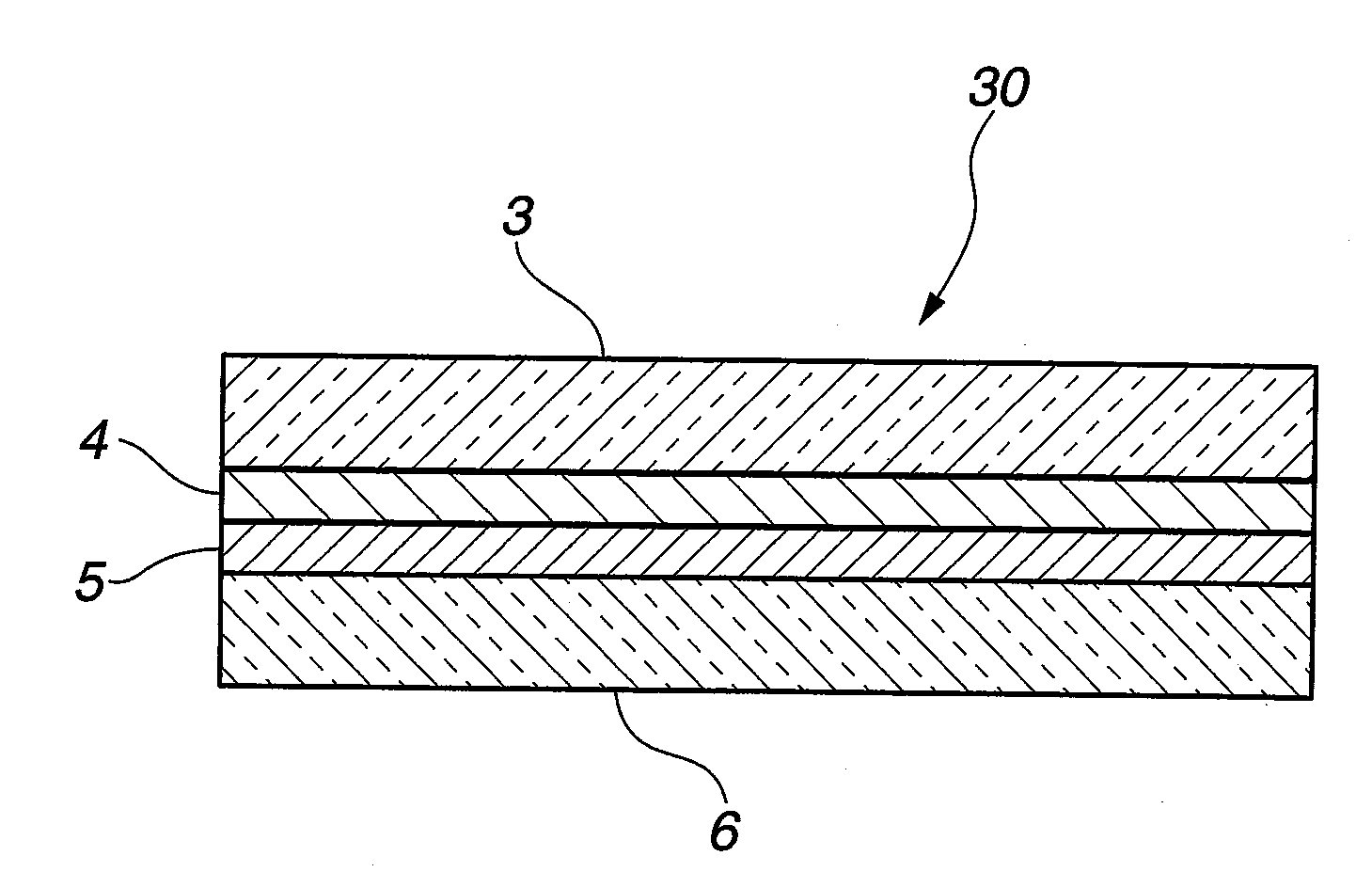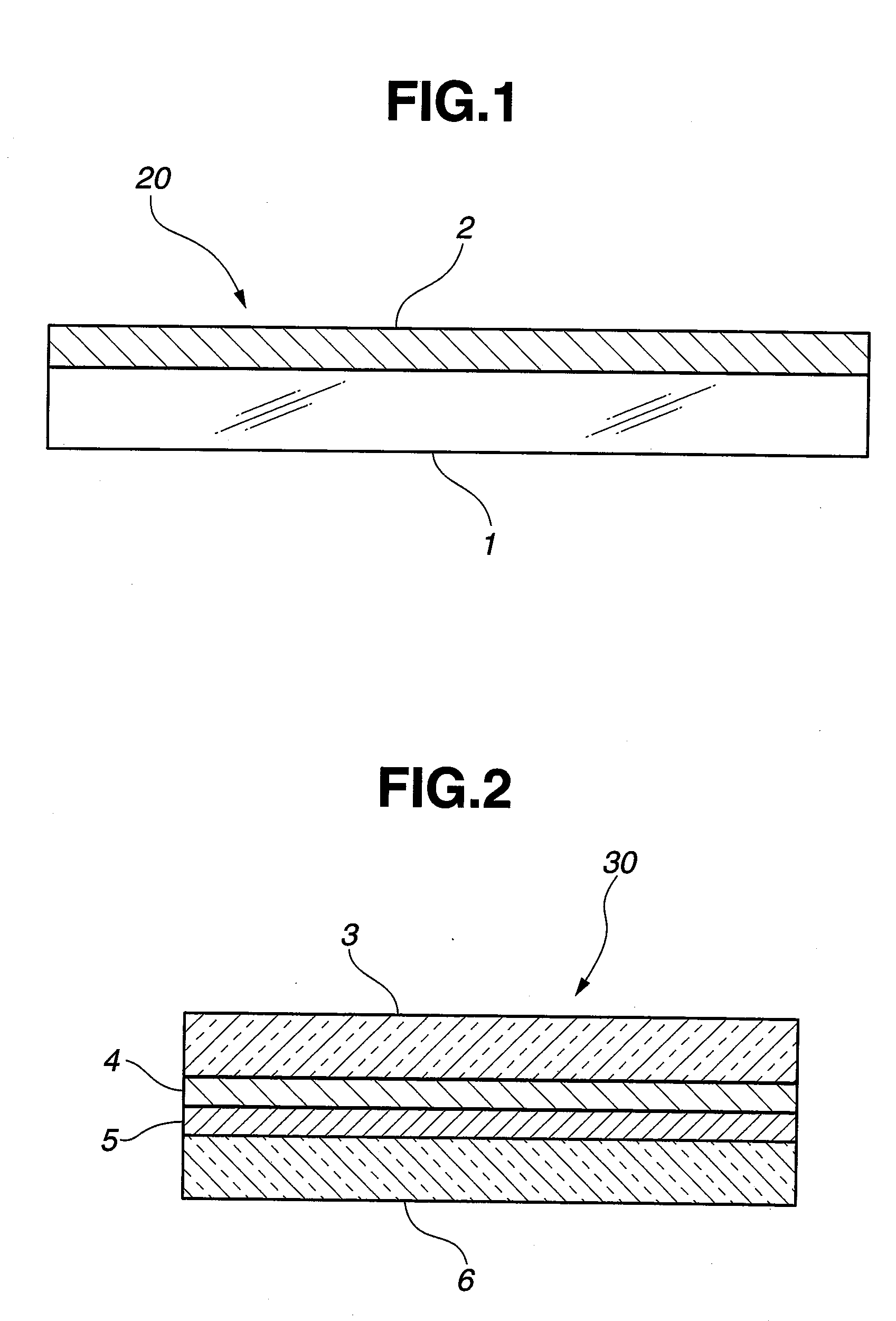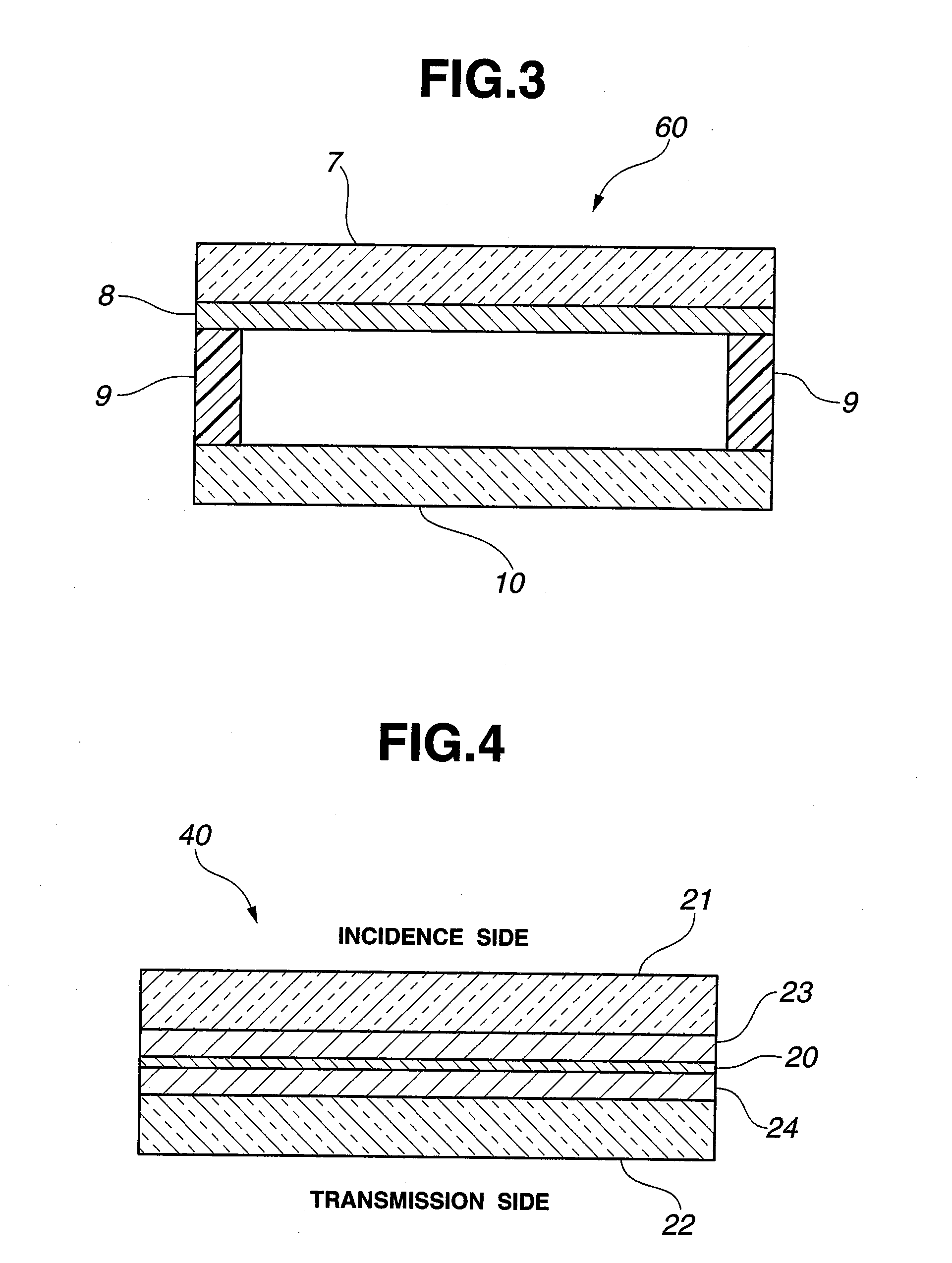Near Infrared Ray Reflective Substrate And Near Infrared Ray Reflective Laminated Glass Employing That Substrate, Near Infrared Ray Reflective Double Layer Glass
a technology of reflective laminated glass and near infrared ray reflective laminated glass, which is applied in the field of heat-reflective substrates, can solve the problems of insufficient heat-insulating effect, increase in thickness and weight, and increase in lamination glass, and achieve good heat-insulating effect and high visible light transmittan
- Summary
- Abstract
- Description
- Claims
- Application Information
AI Technical Summary
Benefits of technology
Problems solved by technology
Method used
Image
Examples
example 1
[0073]There was produced a near-infrared reflective substrate 20 shown in FIG. 1. As the transparent substrate 1, there was used a plate glass 3 (see FIG. 2) of a transparent soda-lime glass produced by float process, having a size of 1000 mm×1000 mm and a thickness of 2 mm.
[0074]This plate glass was washed and dried and set in a sputtering film forming apparatus. Five layers of dielectric films were deposited on the surface to form a near-infrared reflective film 2.
[0075]The dielectric films constituting the near-infrared reflective film 2 were formed by film formations of TiO2 film (thickness: 105 nm), SiO2 film (thickness: 175 nm), TiO2 film (thickness: 105 nm), SiO2 film (thickness: 175 nm) and TiO2 film (thickness: 105 nm) in this order from the glass surface. Electric resistance of the dielectric film stacks was measured, and it was almost infinite.
[0076]The visible light transmittance defined by JIS R3106-1998 of this near-infrared reflective substrate was 83%. As the reflect...
example 2
[0077]Using the near-infrared reflective substrate 20 produced in Example 1, there was produced a near-infrared reflective laminated glass shown in FIG. 2.
[0078]A near-infrared reflective film 4 was positioned on the side of an interlayer film 5. A PVB film having a thickness of 0.76 mm was used as the interlayer film 5.
[0079]As a plate glass 6, there was used the same plate glass as the plate glass 3 used in Example 1.
[0080]The near-infrared reflective substrate 20 (i.e., a laminate of the plate glass 3 and the near-infrared reflective film 4 in FIG. 2) produced in Example 1, the interlayer film 5 and the plate glass 6 were laminated together, followed by a pressurization / heating treatment, thereby producing a near-infrared reflective laminated glass 30 in which the near-infrared reflective substrate 20 produced in Example 1 and the plate glass 6 are bonded together by the interlayer film 5.
[0081]The visible light transmittance defined by JIS R3106-1998 of the near-infrared reflect...
example 3
[0083]A near-infrared reflective substrate 20 shown in FIG. 1 was produced in the same manner as that of Example 1, except in that the near-infrared reflective film 2 was formed by dielectric films of seven layers.
[0084]The near-infrared reflective film 2 was constituted by dielectric films of seven layers by sequential deposition of Nb2O5 film (thickness: 115 nm), SiO2 film (thickness: 175 nm), Nb2O5 film (thickness: 115 nm), SiO2 film (thickness: 175 nm), Nb2O5 film (thickness: 115 nm), SiO2 film (thickness: 175 nm), and Nb2O5 film (thickness: 115 nm) on the glass surface of the plate glass 1.
[0085]By the measurement of electric resistance of these dielectric films of seven layers, it was confirmed to be almost infinite and to have no problem in transmission of electromagnetic waves, similar to Example 1.
[0086]The visible light transmittance defined by JIS R3106-1998 of this near-infrared reflective substrate was 81%. As the reflection characteristics of the plate glass surface we...
PUM
| Property | Measurement | Unit |
|---|---|---|
| transparent | aaaaa | aaaaa |
| thickness | aaaaa | aaaaa |
| thickness | aaaaa | aaaaa |
Abstract
Description
Claims
Application Information
 Login to View More
Login to View More - R&D
- Intellectual Property
- Life Sciences
- Materials
- Tech Scout
- Unparalleled Data Quality
- Higher Quality Content
- 60% Fewer Hallucinations
Browse by: Latest US Patents, China's latest patents, Technical Efficacy Thesaurus, Application Domain, Technology Topic, Popular Technical Reports.
© 2025 PatSnap. All rights reserved.Legal|Privacy policy|Modern Slavery Act Transparency Statement|Sitemap|About US| Contact US: help@patsnap.com



